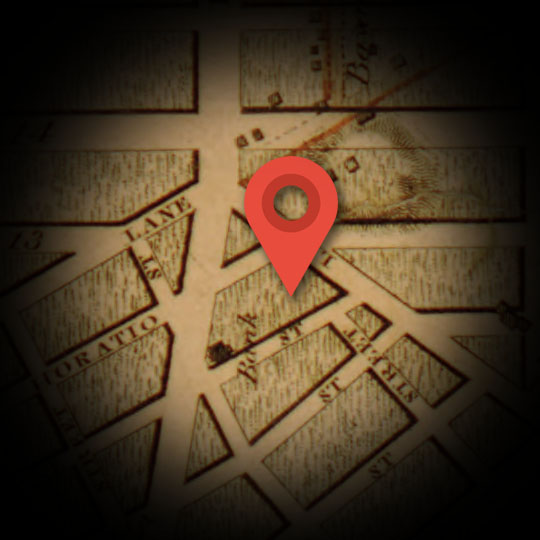WILLIAM BAYARD JR HOME
Explore
The home of William Bayard, Jr., is where the bullet-stricken Alexander Hamilton spent his final hours and died at 2 pm on Thursday, July 12, 1804, in an upstairs bedroom.
He was taken there after being rowed back across the Hudson by the small entourage that accompanied him to his fatal, morning duel with Aaron Burr at Weehawken. Hamilton was too badly wounded to be moved very far, and the Bayard Mansion had to make do to lend Hamilton a place for a private and dignified death.
Partially paralyzed and eerily composed despite agonizing pain and discomfort, Hamilton was attended at the Bayard Mansion by Dr. David Hosack, who had also served in an official role at the duel. Friends and family surrounded the languishing Hamilton, including his sister-in-law Angelica Church and his shocked and grieving wife Elizabeth Hamilton. Hamilton also sought spiritual refuge from friend and Presbyterian Revered John M. Mason.
The William Bayard, Jr., home was erected when the surrounding neighborhood of Greenwich Village was quite literally a wooded, rural hamlet lying what was felt to be a “driving distance” out into the countryside from New York City proper.
During Colonial Era smallpox outbreaks—which happened repeatedly throughout the 1750s and 1760s—well-heeled New Yorkers began building country houses in the area, which was considered both beautiful and healthful.
A highly successful sugar refiner from an ancient lineage, William Bayard, Sr., purchased riverside acreage in this area and ordered construction on the home. Though he had some grievances with imperial policies, the senior Bayard remained a Loyalist during the American Revolution. He fled to London and lived out his days there, When Hamilton friend and fellow Founding Father John Jay visited London in 1784, he and Bayard Sr. passed each other on the street. Jay snubbed him by refusing to greet him.
William Bayard Jr. split with his father over these political lines and remained in the United States. He was a prominent merchant and banker who had had many business and professional ties with Hamilton over the years. Bayard Jr. was even the Director of the Bank of the United States in the mid-1790s. He would live until 1826, heading up a large firm that speculated in U.S. securities and land, had both domestic and European clients, and also sold dry goods like textiles from India.
Bayard Jr. had to re-purchase his family property including this home after it—like many other Loyalist-owned properties—was seized by the State of New York and sold to one Dr. Charles McKnight. All this land was sold and subdivided in April, 1835, into 125 lots, a large enough real estate development to even reorganize and rename the streets.
The Bayard Mansion in which Hamilton died stood where 82 Jane Street stands today. There is still a Bayard Street named for the family in nearby Chinatown.
Interestingly, this long-demolished home was also noted for being struck by lightning on June 10, 1775—and a period newspaper noted that holes were ripped in silver plates contained in a wooden chest, though the chest had no visible damage whatsoever.

TIME FRAME:
July 11-12, 1804
